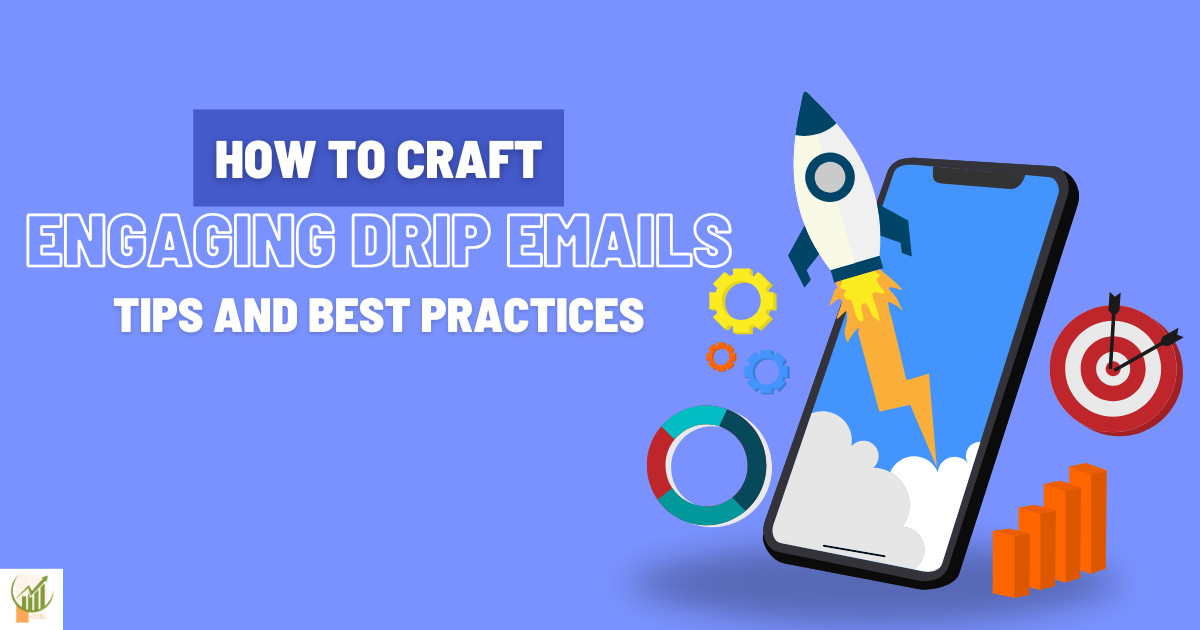Why Drip Emails Are Crucial for Your Marketing Strategy
In today’s digital-first world, maintaining consistent communication with your audience is essential for building trust and driving conversions.
Drip emails—a series of automated emails sent based on user behavior—offer a powerful way to nurture leads, increase engagement, and streamline your marketing efforts.
If you’ve ever wondered how to craft drip emails that captivate your audience and deliver measurable results, you’re in the right place.
In this comprehensive guide, we’ll explore actionable tips, proven strategies, and best practices for creating drip email campaigns that truly resonate with your audience.
What Are Drip Emails? Understanding the Basics:
Drip emails, also known as automated email sequences, are a series of pre-written emails delivered to subscribers at specific intervals or triggered by particular actions.
Unlike one-off email blasts, drip campaigns are tailored to guide recipients through a personalized journey, addressing their needs and behaviors at every step.
Common Drip Email Campaigns
- Welcome Series: Familiarize new subscribers with your brand and its offerings.
- Cart Abandonment Emails: Re-engage users who left items in their shopping cart.
- Re-engagement Campaigns: Rekindle interest among inactive subscribers.
- Lead Nurturing Emails: Educate prospects and move them closer to a purchase decision.

Drip emails work because they provide relevant, timely content, ensuring your audience stays engaged without feeling overwhelmed.
Benefits of Drip Emails: Why They Work
1. Personalization at Scale
Drip emails allow marketers to deliver messages tailored to each recipient’s preferences, behaviors, and stage in the customer journey. Personalization fosters trust and builds stronger relationships.
2. Boosting Engagement and Conversion Rates
Studies show that personalized email campaigns generate 6x higher transaction rates than non-personalized campaigns. By addressing user pain points and providing value, drip emails increase the likelihood of conversions.
3. Automation for Efficiency
Automated drip campaigns save time and resources by running in the background while you focus on other business tasks. Once set up, they require minimal maintenance while delivering consistent results.
Steps to Crafting Engaging Drip Emails
Step 1: Define Your Goals
Begin by determining the purpose of your drip campaign. Are you welcoming new subscribers, educating prospects, or driving sales? Establishing clear objectives will guide your content and provide measurable outcomes.
Step 2: Know Your Audience
Creating effective drip emails starts with understanding your audience. Develop buyer personas and segment your audience based on factors such as demographics, purchase history, or behavior.
Step 3: Write Attention-Grabbing Subject Lines
Your subject line is the first thing recipients see, making it critical for capturing attention. Keep it short, intriguing, and relevant to the email’s content. For example:
- “Greetings from [Brand Name] – Claim Your Exclusive Gift Today!”
- “Still Thinking About [Product Name]? Let Us Help!”
Step 4: Focus on Content and Value
Engage your readers by delivering concise, relevant, and valuable content. Use storytelling, tutorials, or actionable advice to keep them interested.
Include a clear call-to-action (CTA) that encourages them to take the next step, such as visiting your website or completing a purchase.
Step 5: Timing and Frequency
The success of your drip campaign depends on the timing of your emails. Avoid overwhelming your audience by spacing out emails appropriately. For instance:
- Welcome emails: Send immediately after sign-up.
- Follow-ups: Space 2–3 days apart.
- Promotional series: Send 1–2 times per week.
Step 6: Test, Analyze, and Optimize
A/B testing is essential for improving your campaign’s performance. Test various subject lines, email content, and calls-to-action. Track metrics such as open rates, click-throughs, and conversions to find the most effective strategies.

Best Practices for Creating Successful Drip Emails
1. Personalization Is Key
Personalize emails by incorporating dynamic fields like the recipient’s name, location, or previous interactions. Behavioral triggers, such as browsing history or past purchases, can also help deliver hyper-relevant content.
2. Mobile-Friendly Design
Since most emails are opened on mobile devices, ensure they are optimized for mobile viewing. Use responsive designs, concise text, and easily tappable buttons.
3. Compliance with Email Marketing Laws
Stay compliant with regulations like GDPR and CAN-SPAM. Always include an unsubscribe link and obtain consent before sending emails.
4. Leverage Visuals and Multimedia
Incorporate visuals like images, GIFs, or videos to make your emails more engaging. For example, an animated GIF can draw attention to your CTA, while a short video can explain complex concepts.
You can read this: Drip Marketing: What it is + Examples
Common Mistakes to Avoid in Drip Email Campaigns
- Overloading Your Audience: Sending too many emails in a short span can lead to unsubscribes.
- Generic Content: Avoid one-size-fits-all messaging. Instead, focus on personalization.
- Neglecting Analytics: Regularly review your campaign’s performance to make data-driven improvements.

FAQs About Drip Emails
What’s the ideal number of emails in a drip campaign?
The number depends on your goals, but a typical campaign includes 4–7 emails spread over a few weeks.
How do I measure the success of my drip emails?
Track metrics such as open rates, click-through rates, conversion rates, and ROI. Tools like Google Analytics and email marketing platforms provide detailed insights.
What’s the difference between drip emails and email newsletters?
Drip emails are automated and triggered by specific actions, while newsletters are sent to your entire list at regular intervals.
Can small businesses benefit from drip email campaigns?
Absolutely! Drip emails can help small businesses nurture leads, build relationships, and drive sales without significant time investment.
Which tools are best for creating drip emails?
Popular tools include Mailchimp, HubSpot, ActiveCampaign, and GetResponse, all of which offer user-friendly interfaces and robust automation features.
Conclusion: Start Building Effective Drip Emails Today
Drip emails are a game-changer for businesses looking to engage their audience, nurture leads, and boost conversions.
By defining clear goals, personalizing content, and leveraging automation, you can create campaigns that deliver real value to your subscribers.
Don’t wait to harness the power of drip emails—start crafting your first campaign today and watch your engagement soar!
